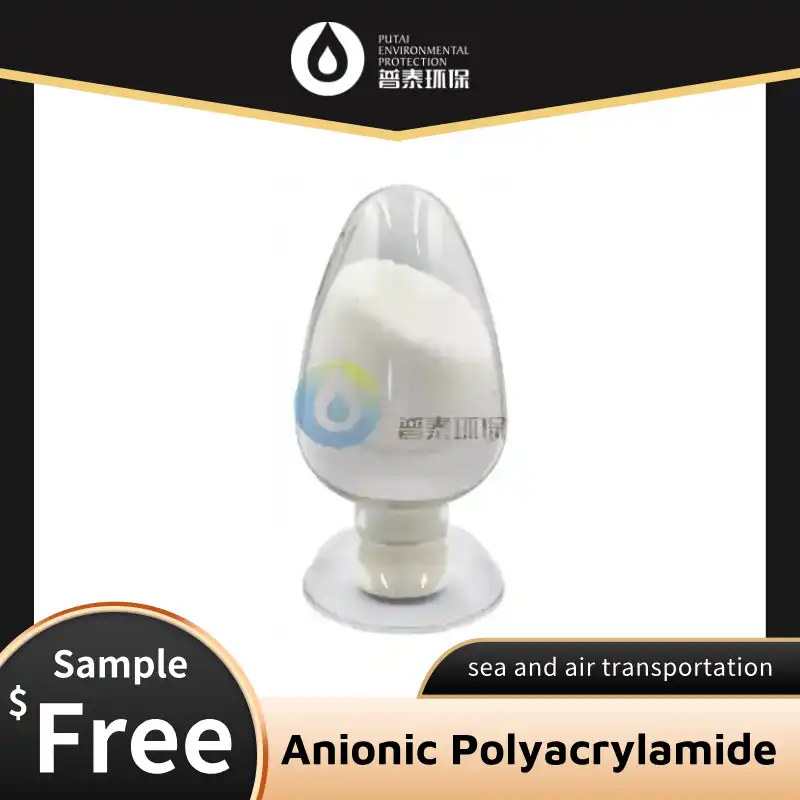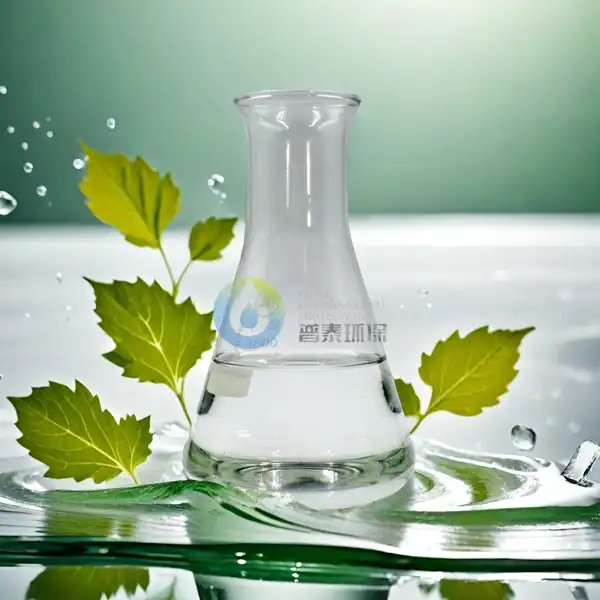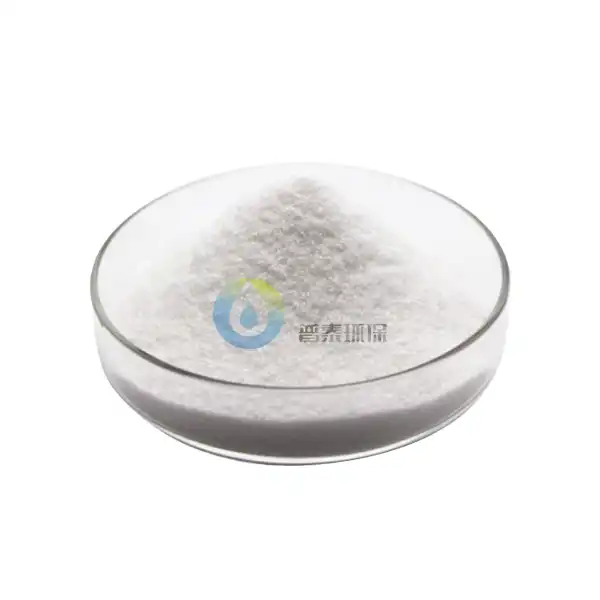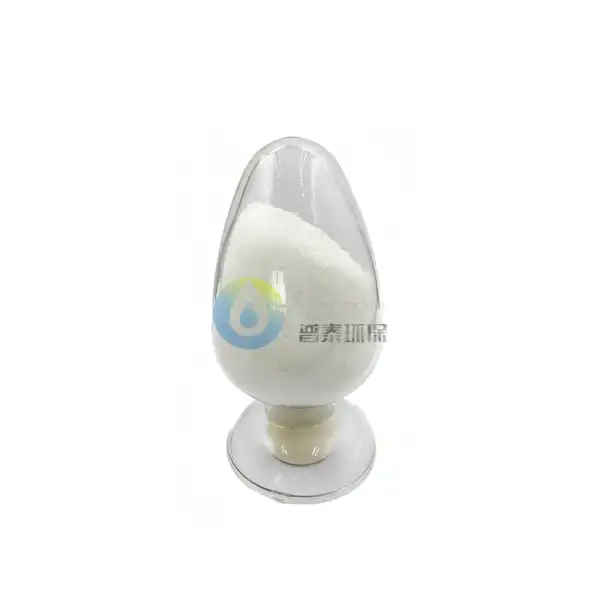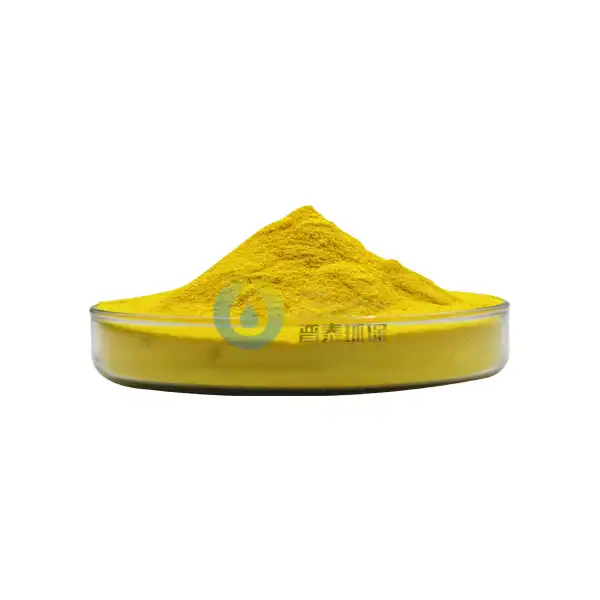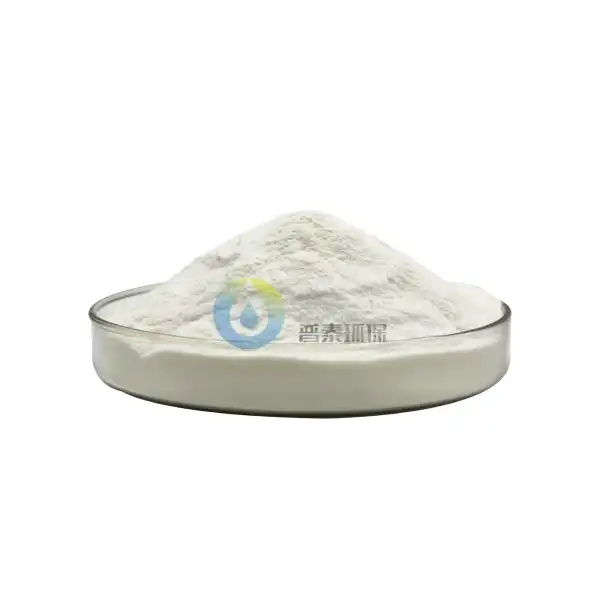What are the chemical properties of Solid PAC?
Solid Polyaluminum Chloride (PAC) is a widely used water treatment chemical known for its effectiveness in coagulation and flocculation processes. Understanding the chemical properties of Solid PAC is crucial for optimizing its use in various applications, particularly in water and wastewater treatment. This blog will explore the key chemical characteristics of it, its behavior in different environments, and how these properties contribute to its efficacy in water treatment processes.
What is the chemical composition of Solid PAC?
Molecular structure of Solid PAC
Solid PAC is a complex inorganic polymer with the general formula [Al2(OH)nCl6-n]m, where n typically ranges from 1 to 5, and m represents the degree of polymerization. The molecular structure of it consists of aluminum atoms linked together by hydroxyl and chloride ions, forming a three-dimensional network. This unique structure contributes to its high efficiency in water treatment applications. The presence of pre-hydrolyzed aluminum species in it allows for faster and more effective coagulation compared to traditional aluminum sulfate (alum) coagulants. The polymeric nature of it also enhances its stability and performance across a wider range of pH and temperature conditions.
Basicity and aluminum content in Solid PAC
Two critical chemical properties of it are its basicity and aluminum content. The basicity of it is typically expressed as a percentage and represents the ratio of hydroxyl groups to the total number of negative ions in the compound. Higher basicity values indicate a greater degree of hydrolysis and polymerization, which often correlates with improved coagulation performance. it products commonly have basicity values ranging from 40% to 85%. The aluminum content in it is another essential characteristic, usually expressed as a percentage of Al2O3. This value typically ranges from 28% to 31% in commercial it products. The aluminum content directly influences the coagulation efficiency of it, with higher aluminum content generally resulting in better performance. However, it's important to note that the optimal aluminum content may vary depending on the specific application and water characteristics.
pH and solubility characteristics of Solid PAC
The pH and solubility characteristics of Solid PAC play a significant role in its effectiveness as a water treatment chemical. It typically has a pH range of 3.5 to 5.0 in a 1% solution, making it slightly acidic. This property allows it to function effectively in a wide range of water conditions without significantly altering the pH of the treated water. The solubility of it is another crucial factor, as it determines how easily the product can be dissolved and dispersed in water. It exhibits excellent solubility in water, with most commercial products being completely soluble. This high solubility ensures rapid and uniform dispersion of the coagulant throughout the water being treated, leading to more efficient and consistent treatment results. The solubility of it remains stable over a broad temperature range, making it suitable for use in various climatic conditions.
How does Solid PAC interact with contaminants in water?
Charge neutralization mechanism of Solid PAC
One of the primary mechanisms by which Solid PAC interacts with contaminants in water is through charge neutralization. Many impurities in water, such as colloidal particles and dissolved organic matter, carry negative surface charges that keep them suspended and stable in the water. Solid PAC, being a cationic coagulant, introduces positively charged aluminum species into the water. These positively charged species neutralize the negative charges on the contaminants, reducing the electrostatic repulsion between particles. This charge neutralization process destabilizes the suspended particles, allowing them to come closer together and form larger, more easily removable aggregates. The high charge density of it, coupled with its pre-hydrolyzed nature, makes it particularly effective in this charge neutralization process, often requiring lower dosages compared to traditional coagulants.
Adsorption and bridging effects of Solid PAC
In addition to charge neutralization, it also interacts with contaminants through adsorption and bridging mechanisms. The polymeric structure of Solid PAC provides a large surface area for adsorption of various impurities, including organic compounds, heavy metals, and colloidal particles. This adsorption process further enhances the removal of contaminants from water. Moreover, the long-chain polymeric structure of it enables it to form bridges between particles, creating larger and stronger flocs. This bridging effect is particularly beneficial in removing fine particles and enhancing the overall stability of the formed flocs. The combination of adsorption and bridging mechanisms allows it to effectively treat waters with varying types and concentrations of contaminants, making it a versatile coagulant for diverse water treatment applications.
Hydrolysis and precipitation reactions of Solid PAC
Hydrolysis and precipitation reactions are crucial aspects of how it interacts with water and contaminants. When it is added to water, it undergoes hydrolysis, forming various aluminum hydroxide species. These hydrolysis products, including monomeric and polymeric aluminum species, play a significant role in the coagulation process. The hydrolysis reactions of it are generally faster and more controlled compared to traditional aluminum-based coagulants, due to its pre-hydrolyzed nature. This rapid hydrolysis leads to quicker formation of effective coagulating species, resulting in faster floc formation. Additionally, as the coagulation process progresses, insoluble aluminum hydroxide precipitates form, which further contribute to the removal of contaminants through sweep flocculation. These precipitates can entrap and remove a wide range of impurities, including particulate matter, dissolved organic compounds, and even some microorganisms.
What factors influence the effectiveness of Solid PAC in water treatment?
Impact of water pH on Solid PAC performance
The pH of the water being treated is a critical factor influencing the effectiveness of Solid PAC in water treatment. It generally performs well over a broader pH range compared to traditional aluminum sulfate coagulants. However, its optimal performance is typically observed in the pH range of 5.0 to 7.5. Within this range, Solid PAC maintains its positive charge and forms stable aluminum hydroxide species that are most effective for coagulation. At lower pH levels, the hydrolysis of it may be incomplete, potentially reducing its coagulation efficiency. Conversely, at higher pH levels above 8.0, the aluminum species may become negatively charged, diminishing their ability to neutralize and coagulate negatively charged contaminants. It's important to note that the optimal pH range can vary slightly depending on the specific formulation of Solid PAC and the characteristics of the water being treated. Therefore, pH adjustment may be necessary in some cases to ensure the best performance of Solid PAC in water treatment applications.
Temperature effects on Solid PAC efficacy
Temperature is another significant factor that can influence the effectiveness of Solid PAC in water treatment. Generally, Solid PAC maintains good performance across a wide temperature range, which is one of its advantages over some other coagulants. However, temperature changes can affect various aspects of the coagulation process. At lower temperatures, the kinetics of hydrolysis and floc formation may slow down, potentially requiring longer reaction times or higher dosages of Solid PAC to achieve the desired treatment results. Conversely, higher temperatures can accelerate the hydrolysis of Solid PAC and increase the rate of floc formation. However, excessively high temperatures may also lead to increased solubility of some contaminants, potentially affecting the overall treatment efficiency. It's worth noting that Solid PAC typically exhibits better low-temperature performance compared to traditional alum coagulants, making it a preferred choice for water treatment in colder climates or during winter months.
Dosage optimization for Solid PAC in different water conditions
Optimizing the dosage of Solid PAC is crucial for achieving effective water treatment while maintaining cost-efficiency. The optimal dosage can vary significantly depending on several factors, including the type and concentration of contaminants, water pH, temperature, and the specific treatment goals. Generally, Solid PAC requires lower dosages compared to traditional aluminum sulfate coagulants due to its higher aluminum content and pre-hydrolyzed nature. However, determining the exact optimal dosage often requires jar testing or pilot studies for specific water conditions. Overdosing it can lead to excessive aluminum residuals in treated water and increased treatment costs, while underdosing may result in inadequate contaminant removal. Factors such as high turbidity, high organic content, or the presence of specific pollutants may necessitate higher dosages of it. Additionally, seasonal variations in water quality may require periodic adjustment of Solid PAC dosages to maintain consistent treatment performance throughout the year.
Conclusion
Solid PAC is a versatile and effective water treatment chemical with unique chemical properties that contribute to its superior performance in coagulation and flocculation processes. Its complex molecular structure, high basicity, and optimal aluminum content enable it to effectively neutralize and remove a wide range of contaminants from water. The interactions of Solid PAC with water impurities through charge neutralization, adsorption, and bridging mechanisms make it a powerful tool in water and wastewater treatment. However, factors such as pH, temperature, and proper dosage optimization play crucial roles in maximizing its effectiveness. Understanding these chemical properties and influencing factors is essential for water treatment professionals to harness the full potential of Solid PAC in various applications.
Xi'an Putai Environmental Protection Co., Ltd. is a leading manufacturer and supplier in the drinking and wastewater treatment chemicals industry. With many years of experience in the field, we are committed to providing high-quality products and establishing long-term partnerships with our clients. Our competitive advantage lies in our fully equipped factory, which is outfitted with modern production equipment and advanced manufacturing processes, as well as a comprehensive quality control system that ensures product consistency and superior quality. Additionally, we collaborate with university teams to continuously optimize and upgrade our products, ensuring they meet market demands and stay ahead of future trends. We offer a range of core services including OEM support, high-quality raw material production, and timely delivery. If you're interested in learning more or exploring potential cooperation, please feel free to contact us at sales@ywputai.com. We look forward to the opportunity to work with you.
References
1. Wang, Y., & Gao, B. (2019). Polyaluminum chloride: Properties, preparation, and application in water treatment. Chemical Engineering Journal, 360, 1447-1463.
2. Sinha, S., Yoon, Y., Amy, G., & Yoon, J. (2004). Determining the effectiveness of conventional and alternative coagulants through effective characterization schemes. Chemosphere, 57(9), 1115-1122.
3. Zouboulis, A. I., & Tzoupanos, N. D. (2009). Polyaluminium silicate chloride—A systematic study for the preparation and application of an efficient coagulant for water or wastewater treatment. Journal of Hazardous Materials, 162(2-3), 1379-1389.
4. Jiang, J. Q., & Graham, N. J. D. (1998). Pre-polymerised inorganic coagulants and phosphorus removal by coagulation—A review. Water SA, 24(3), 237-244.
5. Hu, C., Liu, H., Qu, J., Wang, D., & Ru, J. (2006). Coagulation behavior of aluminum salts in eutrophic water: Significance of Al13 species and pH control. Environmental Science & Technology, 40(1), 325-331.
6. Gebbie, P. (2001). Using polyaluminum coagulants in water treatment. In Proceedings of the 64th Annual Water Industry Engineers and Operators' Conference (pp. 39-47). Bendigo, Australia.

